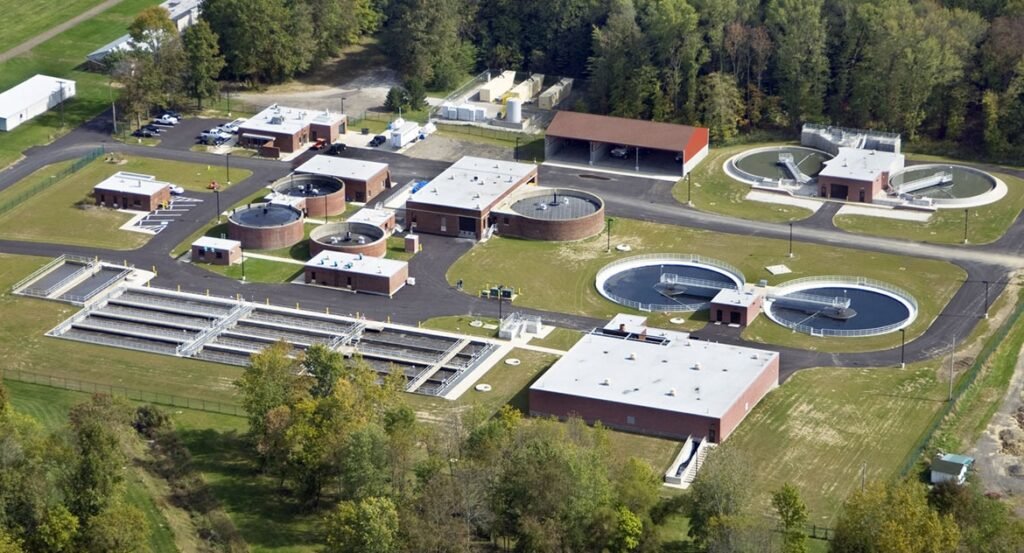South Mesquite Creek Regional Wastewater Treatment Plant

Certainly! Here’s an article about the South Mesquite Creek Regional Wastewater Treatment Plant:
South Mesquite Creek Regional Wastewater Treatment Plant: A Pillar of Infrastructure and Environmental Stewardship
In the heart of Dallas-Fort Worth Metroplex lies a crucial cornerstone of public health and environmental stewardship: the South Mesquite Creek Regional Wastewater Treatment Plant (SMCWWTP). Serving a substantial population and handling a significant volume of wastewater, this facility plays an essential role in safeguarding the environment and ensuring the sustainable management of water resources. This article delves deep into the operations, statistics, recent developments, key projects, and community initiatives associated with the SMCWWTP.
Plant Overview and Population Served
The South Mesquite Creek Regional Wastewater Treatment Plant is an integral part of the North Texas Municipal Water District (NTMWD) infrastructure, serving a diverse array of communities in the southeastern portion of Dallas County. This facility caters to a population of over 200,000 residents spread across several municipalities, including Mesquite, Balch Springs, and parts of Sunnyvale. The SMCWWTP is the linchpin for these communities, ensuring safe and efficient wastewater treatment and environmental preservation.
Wastewater Volume and Treatment Capacity
The facility is designed to handle a substantial flow of wastewater, managing an average daily flow of approximately 31 million gallons per day (MGD). However, during peak wet weather events, the plant’s capacity can be stretched beyond its routine limits, with the ability to handle up to 90 MGD. This variability is crucial for managing stormwater infiltration and inflow, which can significantly increase wastewater volumes during heavy rainfall events.
Treatment Processes
Ensuring wastewater is treated to the highest standards involves a rigorous multi-stage process:
-
- Preliminary Treatment: This involves screening and grit removal to eliminate large debris and sediments from the incoming wastewater.
- Preliminary Treatment: This involves screening and grit removal to eliminate large debris and sediments from the incoming wastewater.
-
- Primary Treatment: In this stage, the wastewater enters primary clarifiers where organic solids settle to the bottom, and oils and greases float to the top for removal.
- Primary Treatment: In this stage, the wastewater enters primary clarifiers where organic solids settle to the bottom, and oils and greases float to the top for removal.
-
- Secondary Treatment: Through a biological treatment process involving aeration basins and secondary clarifiers, microorganisms reduce organic material and pollutants, effectively cleaning the water.
- Secondary Treatment: Through a biological treatment process involving aeration basins and secondary clarifiers, microorganisms reduce organic material and pollutants, effectively cleaning the water.
-
- Tertiary Treatment: This phase includes advanced filtration and disinfection, ensuring the water meets or exceeds regulatory standards before being discharged.
- Tertiary Treatment: This phase includes advanced filtration and disinfection, ensuring the water meets or exceeds regulatory standards before being discharged.
-
- Biosolids Management: Solid waste byproducts are treated and often repurposed as fertilizers or soil conditioners for agricultural use.
Recent Developments and Local News
In recent years, the South Mesquite Creek Regional Wastewater Treatment Plant has made headlines for several progressive initiatives and expansions aimed at enhancing its operational efficiency and environmental compliance.
Plant Expansion and Upgrades
In response to the growing population and increasing wastewater volumes, NTMWD has embarked on significant expansion projects. A major upgrade project initiated in 2021, with a budget of approximately $70 million, is set to increase the plant’s capacity, incorporate advanced treatment technologies, and enhance resilience against extreme weather events. This initiative underscores the commitment to maintaining high environmental standards and preparing for future demands.
Technological Innovations
Incorporating cutting-edge technology has been a focus area for the plant. The integration of real-time monitoring systems and advanced process controls has greatly improved the plant’s efficiency and reliability. These upgrades enable staff to track performance metrics continuously and respond swiftly to operational challenges.
Solar Power Initiative
In alignment with clean energy goals, SMCWWTP is exploring the feasibility of installing solar panels to power a portion of its operations. This move not only aims to reduce the facility’s carbon footprint but also cut operating costs, promoting sustainable and cost-effective wastewater treatment solutions.
Key Projects and Environmental Stewardship
Two exemplary projects illustrate the SMCWWTP’s dedication to innovation and sustainability:
Nutrient Recovery Project
Excessive nutrients in discharged water can cause algal blooms and other ecological disruptions in local waterways. Addressing this issue, the Nutrient Recovery Project involves advanced processes to capture and repurpose nitrogen and phosphorus from the wastewater. These nutrients can then be converted into eco-friendly fertilizers, creating a circular economy while protecting water quality in South Mesquite Creek and beyond.
Wetlands Creation
Another standout initiative is the creation of constructed wetlands adjacent to the plant. These wetlands act as a natural filter, providing an additional layer of water treatment before the final discharge into the creek. Beyond their functional role, these wetlands transform into habitats for local wildlife, enhancing biodiversity and offering educational opportunities for the community.
Community Engagement and Education
Maintaining transparency and fostering community relations is a cornerstone of the South Mesquite Creek Regional Wastewater Treatment Plant’s philosophy. The plant engages actively with the communities it serves through various means:
Public Tours and Open Houses
The plant regularly holds public tours and open houses, allowing residents to see the facilities firsthand and understand the intricate processes involved in wastewater treatment. These events often include interactive demonstrations, educational materials, and discussions with plant staff, fostering a deeper appreciation for the work behind the scenes.
Schools and Educational Programs
Recognizing the importance of educating the next generation, SMCWWTP collaborates with local schools to offer educational programs and field trips. Students can participate in hands-on activities that cover water conservation, environmental protection, and basic principles of wastewater treatment.
Community Advisory Committees
To ensure community voices are heard, the plant has established advisory committees comprising local stakeholders. These committees provide feedback, address concerns, and help in planning future developments, ensuring that the plant’s operations align with community needs and priorities.
Conclusion
The South Mesquite Creek Regional Wastewater Treatment Plant exemplifies the intersection of advanced technology, environmental stewardship, and community engagement. As a keystone of the NTMWD, it is pivotal in supporting public health, protecting the environment, and fostering sustainable development. Through continuous improvements, innovative projects, and active community involvement, the SMCWWTP navigates the challenges of modern urban wastewater management with ingenuity and commitment. As the Dallas-Fort Worth area continues to grow, the plant will undoubtedly remain a cornerstone of regional infrastructure, contributing to a healthier and more sustainable future for all its residents.



